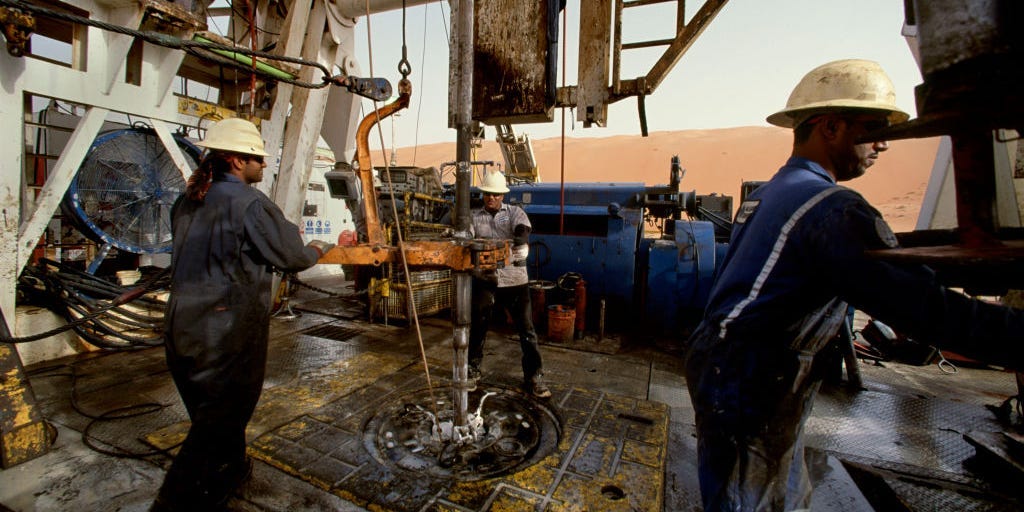
Reza/Getty Images
- WTI oil climbed 3% to trade above $75 per barrel for the first time since October 2018.
- The price gain followed a Reuters report that OPEC+ looks set to increase oil output starting in August.
- OPEC+ is holding a virtual meeting on Thursday.
- See more stories on Insider's business page.
US oil prices stepped to their highest price since 2018 Thursday following a report that the Organization of the Petroleum Exporting Countries and its allies are headed toward increasing crude output this year, suggesting producers are working to meet increased demand following the worst of the COVID-19 crisis.
Saudi Arabia and Russia, the world's two largest producers in the OPEC+ group, have reached a preliminary agreement on raising output between August and December, according to Reuters, citing unnamed sources. The group could add about 2 million barrels per day to the market by December.
West Texas Intermediate crude climbed 3.2% to $75.80, trading above $75 for the first time since October 2018. Brent crude, oil's international benchmark, gained 2.5% to $76.46 per barrel. Brent last week crossed above $76 for the first time since October 2018.
News of the preliminary deal came as OPEC+ was set to meet Thursday via videoconference. A source told Reuters the deal would amount to monthly increases of less than 500,000 barrels a day.
Oil producers have been slowly increasing output since slashing production in 2020 as the COVID-19 outbreak forced businesses worldwide to close to curb the spread of the disease.
"Oil experts forecast a supply increase in the region of 500 million barrels per day so anything less than this will see bulls push prices further north to new highs," Lukman Otunuga, research analyst at FXTM, wrote in a Thursday note.
He said there are several signs of a tight market emerging, with negotiations over Iran's nuclear program facing renewed delays, shale heavyweight Conoco Phillips indicating the industry is unlikely to raise output significantly and US crude oil inventories dropping last week to their lowest levels since March 2020.
"All told, producers appear to remain disciplined and won't overwhelm OPEC as it brings more supply, even if the Russians especially are keen to ramp up their production levels," he wrote.
US crude inventories are down 6% below the five-year average for this time of year, the Energy Information Administration said Wednesday in an update for the week ending June 25.
